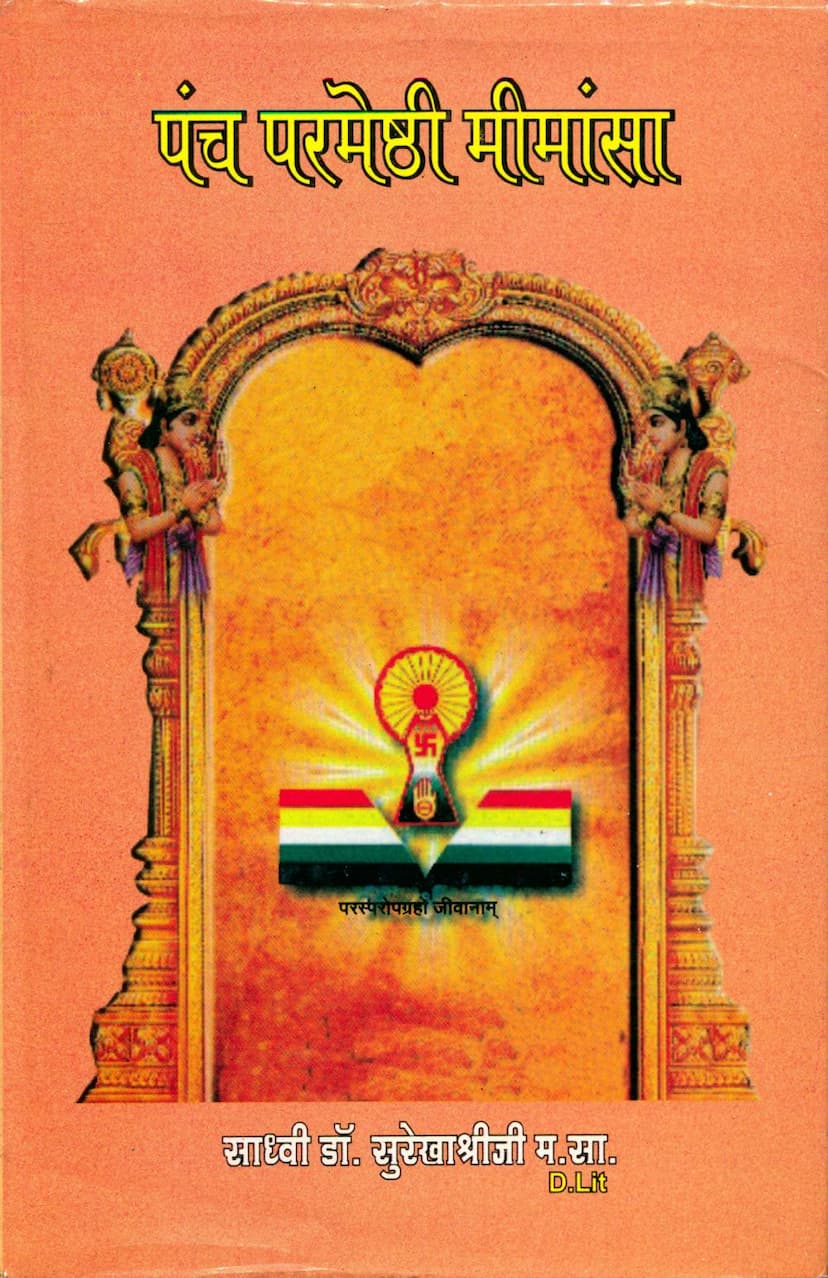Panch Parmeshthi Mimansa
Added to library: September 2, 2025

Summary
Surekhashreeji's "Panch Parmeshthi Mimansa" is a comprehensive doctoral dissertation (D. Litt.) presented to fulfill the requirements for the degree. The book is published by Vichakshan Smruti Prakashan and was first printed in 2008 in Jaipur.
The title itself, "Panch Parmeshthi Mimansa," translates to "An Inquiry into the Five Supreme Beings" or "A Discourse on the Five Supreme Ones." The central theme of the book revolves around the Five Supreme Souls (Panch Parmeshthi) in Jainism: Arihant, Siddha, Acharya, Upadhyay, and Sadhu.
The author, Sadhvi Dr. Surekhashreeji M.S., undertakes a deep and comparative study of these five entities within the framework of Jain philosophy and compares them with similar concepts in other Indian philosophical schools, including Vedic, Upanishadic, Brahmanical, Mimamsa, Sankhya-Yoga, Nyaya-Vaisheshika, Buddhist, and even Charvaka (though Charvaka is considered atheistic).
Here's a breakdown of the key aspects covered in the book, based on the provided index and initial pages:
Core Subject Matter:
- The Five Supreme Beings (Panch Parmeshthi): The book meticulously analyzes the concept, role, and significance of each of the five supreme beings in Jainism:
- Arihant: The liberated souls who are still embodied and have conquered their inner enemies.
- Siddha: The completely liberated souls who have shed all karmic bondage and reside in the highest spiritual realm.
- Acharya: The spiritual leaders and preceptors of the Jain monastic order.
- Upadhyay: The teachers who guide the monks in scriptural knowledge and practice.
- Sadhu: The ascetics and practitioners of the Jain path.
- Their Significance: The book explores how these five entities are considered both the means (sadhana) and the end (sadhyā) of the spiritual journey in Jainism. They represent the first step for the aspirant and the ultimate goal.
- Universality and Impartiality: The author emphasizes that the Panch Parmeshthi are not specific individuals but rather embody qualities and stages of spiritual attainment. This makes them universally applicable and transcendent of any particular sect or lineage.
- Comparative Study: A significant portion of the research involves comparing the Jain concept of Panch Parmeshthi with similar notions in other Indian philosophies and religions. This includes examining whether other traditions have similar concepts, how they are described, and their historical context. The author notes that while the term "Parmeshthi" might not be explicitly found in all Jain Agamas, the concepts and beings are deeply embedded. The book highlights instances where Vedic and Buddhist texts mention beings or concepts that bear resemblance to the Panch Parmeshthi.
- The Namokar Mantra: The book delves into the structure, meaning, and historical development of the Namokar Mantra (also known as Navkar Mantra), which is a direct invocation of the Panch Parmeshthi. It is considered the most auspicious and the essence of all scriptures.
- Detailed Analysis of Each Parmeshthi: The dissertation dedicates specific chapters to each of the Panch Parmeshthi, analyzing their conceptualization, historical background, unique characteristics, and the path to attaining their state.
- Chapter 3: Arihant Parmeshthi: Discusses the historical aspects of Arihants in Hindu, Jain, and Buddhist traditions, their scriptural mentions, etymological meanings, types of Kevalis, their uniqueness, qualifications, and their role in world welfare. It also compares them with Avatars, Buddhas, and Ishwar.
- Chapter 4: Siddha Pad: Explores the concept of liberated souls, their characteristics, the nature of liberation (moksha), the destruction of eight types of karmas, their unique spiritual state, and compares them with concepts in other traditions.
- Subsequent Chapters: Chapters 5 through 7 are dedicated to the Acharya, Upadhyay, and Sadhu respectively, detailing their roles, qualities, leadership in the Sangh (monastic community), and the disciplines they follow.
- The Cosmic Significance of Om and Panch Parmeshthi: Chapter 8 investigates the connection between the sacred syllable "Om" (Pranava) and the Panch Parmeshthi, exploring their symbolic representation through colors and their role in meditation and spiritual attainment.
- The Namokar Mantra: Chapter 9 focuses on the Namokar Mantra itself, analyzing its structure, etymology, significance as the "Navkar," its depth, and its supreme status in Jainism. It also discusses the universality of the Panch Parmeshthi and their integration into the mantra.
Methodology and Scope:
The book is presented as a "maha-nibandh" (great treatise), indicating a thorough and scholarly approach. The author references numerous ancient Jain texts (Agamas), commentaries, and also draws upon broader Indian philosophical literature for comparative analysis. The dissertation aims to elucidate the "harsh" (essence) of each Parmeshthi.
In essence, "Panch Parmeshthi Mimansa" is a profound exploration of the core devotional and philosophical concepts within Jainism, meticulously dissecting the nature and significance of the Panch Parmeshthi and their central place in Jain practice, particularly through the Namokar Mantra.